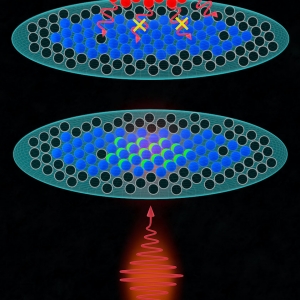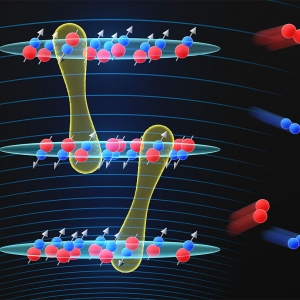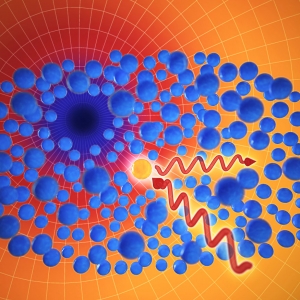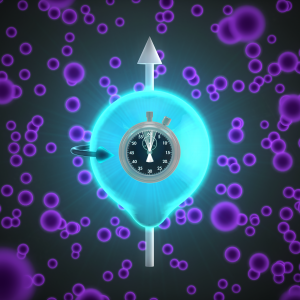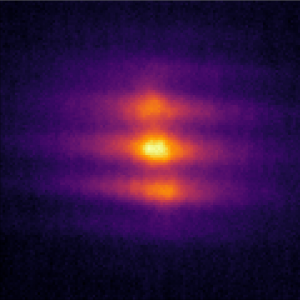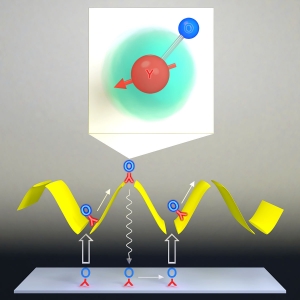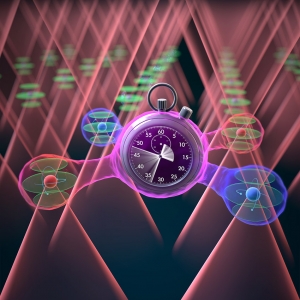Research Highlights
Quantum Information Science & Technology
A Look at Colorado's Quantum Revolution
Published:
PI: Jun Ye | PI: Cindy Regal | PI: Margaret Murnane | PI: Henry Kapteyn | PI: Ana Maria Rey
Precision Measurement | Quantum Information Science & Technology
An Atomic Game of Duck, Duck, Goose
Published:
PI: Jun Ye | PI: Ana Maria Rey
Precision Measurement | Quantum Information Science & Technology
Electrifying Molecular Interactions
Published:
PI: Jun Ye | PI: Ana Maria Rey
Atomic & Molecular Physics | Precision Measurement | Quantum Information Science & Technology
JILA Atomic Clocks Measure Einstein’s General Relativity at Millimeter Scale
Published:
PI: Jun Ye
Atomic & Molecular Physics | Precision Measurement | Quantum Information Science & Technology
Colorado Congressman Joe Neguse tours JILA
Published:
PI: Jun Ye | PI: Margaret Murnane
Atomic & Molecular Physics | Quantum Information Science & Technology
Atomic Musical Chairs
Published:
PI: Jun Ye
Quantum Information Science & Technology | Other
Help Wanted: How to Build a Prepared and Diverse Quantum Workforce
Published:
PI: Heather Lewandowski | PI: Jun Ye | PI: Margaret Murnane
Quantum Information Science & Technology
Don’t React, Interact: Looking Into Inert Molecular Gases
Published:
PI: John Bohn | PI: Jun Ye
Atomic & Molecular Physics | Biophysics | Chemical Physics
When Breath Becomes Data
Published:
PI: Jun Ye | PI: David Nesbitt
Precision Measurement | Quantum Information Science & Technology
Wiggles in Time: The Search for Dark Matter Continues
Published:
PI: Jun Ye | PI: Eric Cornell | PI: Konrad Lehnert
Atomic & Molecular Physics | Precision Measurement
NIST Team Compares 3 Top Atomic Clocks With Record Accuracy Over Both Fiber and Air
Published:
PI: Jun Ye
Quantum Information Science & Technology
Molecules in Flat Lands: an Entanglement Paradise
Published:
PI: Ana Maria Rey | PI: Jun Ye
Atomic & Molecular Physics | Laser Physics | Quantum Information Science & Technology
New JILA Tools ‘Turn On’ Quantum Gases of Ultracold Molecules
Published:
PI: Jun Ye
Atomic & Molecular Physics | Laser Physics | Quantum Information Science & Technology
JILA’s Electric ‘Knob’ Tunes Chemical Reaction Rates in Quantum Gas
Published:
PI: Jun Ye
Atomic & Molecular Physics | Laser Physics | Quantum Information Science & Technology
Advanced Atomic Clock Makes a Better Dark Matter Detector
Published:
PI: Jun Ye
Atomic & Molecular Physics
Total Ellipse of the SU(N)
Published:
PI: Jun Ye | PI: Ana Maria Rey
Atomic & Molecular Physics | Laser Physics | Precision Measurement
Tweezing a New Kind of Atomic Clock
Published:
PI: Adam Kaufman | PI: Jun Ye
Atomic & Molecular Physics
How universal is universality?
Published:
PI: Eric Cornell | PI: Jun Ye





